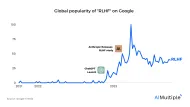Machine Learning in Data Integration: 8 Challenges & Use Cases
Integrating and analyzing data from disparate sources effectively has become paramount. Data integration, while crucial, often presents numerous challenges, ranging from managing data quality to ensuring security.
As organizations grapple with these obstacles, Artificial Intelligence (AI) and Machine Learning (ML) are emerging as transformative technologies, offering innovative solutions to simplify and enhance data integration processes.
This article will explore the role AI and ML play in data integration, highlighting how these techniques not only address key challenges but also contribute to unlocking the true potential of data, empowering organizations to make data-driven decisions and achieve a competitive edge.
What is Data Integration?
Data integration is the process of combining data from different sources and making it available in a unified format for analysis, reporting, and decision-making. This process is crucial for organizations that aim to consolidate data from various systems, applications, and databases to gain insights and support data-driven decision-making.
Data integration typically involves the following steps:
- Data extraction: Retrieving data from different sources, such as databases, applications, APIs, and files.
- Data transformation: Converting and standardizing the extracted data into a common format, resolving discrepancies in data types, formats, and units. This may also involve data cleansing and validation to ensure data quality.
- Data loading: Storing the transformed data into a target system or repository, such as a data warehouse, data lake, or centralized database.
If you’re interested, you can check our components of data integration article.
Why are AI and ML important for data integration?
AI and ML are essential for data integration as they significantly enhance the process by automating and streamlining various tasks. Organizations can overcome data quality, scalability, and security challenges by leveraging AI and ML. AI-powered data integration can result in better decision-making, improved operational efficiency, and a more agile response to changing business conditions.
AI and ML-driven data integration enable organizations to handle large volumes of data from diverse sources efficiently and in various formats. This technology can automatically:
- detect data anomalies
- facilitate mapping and transformation
- ensure security and compliance.
What are the challenges to successful data integration?
1-Data silos
Data silos occur when stored in isolated systems, making accessing and integrating with other data sources difficult. Breaking down these silos is crucial for successful data integration but can be challenging due to organizational structure, departmental boundaries, or the presence of legacy systems.
2-Data quality and inconsistencies
Poor data quality, inconsistencies, and inaccuracies can significantly affect data integration efforts. Ensuring data is clean, complete, and accurate is essential, but this can also be time-consuming and resource-intensive.
You can read our “Data Quality in AI” to get a better understanding.
3-Data heterogeneity
Organizations often deal with diverse data sources with different formats, structures, and semantics. Integrating such heterogeneous data into a unified format is a complex task that may require significant manual effort and expertise.
4-Data volume and scalability
The exponential growth of data generated by businesses can strain data integration efforts. Scaling data integration processes to handle the increasing data volume while maintaining performance and efficiency is a significant challenge.
5-Data security and privacy
Ensuring data security and privacy throughout the integration process is essential. Data integration requires careful handling of sensitive information, and organizations must comply with data protection regulations such as GDPR, HIPAA, and others.
Establishing proper data governance policies is crucial for successful data integration. This involves setting up a framework for data ownership, access, and usage and ensuring compliance with regulatory requirements and industry standards.
6-Legacy systems and infrastructure
Older systems and infrastructure may not support modern data integration requirements, creating obstacles to compatibility, performance, and flexibility. Upgrading or migrating from legacy systems can be resource-intensive and time-consuming.
7-Skills gap and technical expertise
Successful data integration requires a team with technical expertise in data management, ETL (Extract, Transform, Load) processes, and data modeling. Organizations may face challenges in finding and retaining skilled professionals for these tasks.
8-Budget constraints
Implementing a robust data integration solution can be expensive, particularly for small and medium-sized organizations. Budget constraints may limit the ability to invest in the necessary infrastructure, tools, and personnel.
8 use cases of ML in data integration
1-Data discovery and mapping
AI algorithms can automatically identify and classify data sources, making it easier for organizations to discover and integrate new data into their systems. Additionally, AI can help map and reconcile different data structures, identify relationships between datasets, and create a common data model.
2-Data quality improvement
AI techniques such as Machine Learning (ML) and Natural Language Processing (NLP) can automatically detect and correct data anomalies, inconsistencies, and errors. By continuously learning from the data, AI can improve data quality over time and ensure that integrated data is clean, accurate, and reliable.
3-Data transformation
AI can automatically transform data into the required format, apply calculations, and aggregate data as needed. AI-driven data transformation helps organizations save time and resources while ensuring the transformed data is consistent and accurate. (See Figure 1)
Source: Tibco1
Figure 1: Data transformation visualized
4-Metadata management
AI can automate metadata generation and management, extracting information about data sources, lineage, and quality. This gives organizations better visibility and control over their data assets, ensuring that integrated data is used effectively and consistently.
5-Real-time data integration
AI can enable real-time data integration by continuously monitoring data sources and triggering data ingestion and processing when changes are detected. This gives organizations up-to-date, integrated data for better decision-making and faster responses to changing conditions.
6-Data integration recommendations
AI can provide data integration recommendations by analyzing usage patterns, data relationships, and data quality. This helps organizations prioritize and focus their data integration efforts on the most valuable and relevant data sources.
7-Scalability and performance
AI-powered data integration platforms can scale more efficiently to handle larger volumes of data and complex data processing tasks, allowing organizations to stay agile and respond to increasing data demands.
8-Enhanced security andcompliance
AI can monitor and analyze data access patterns and usage, detecting and alerting on suspicious activities, which helps organizations maintain security and compliance in their data integration processes.
External Links
- 1. Tibco. “What is Data Transformation?”



Comments
Your email address will not be published. All fields are required.